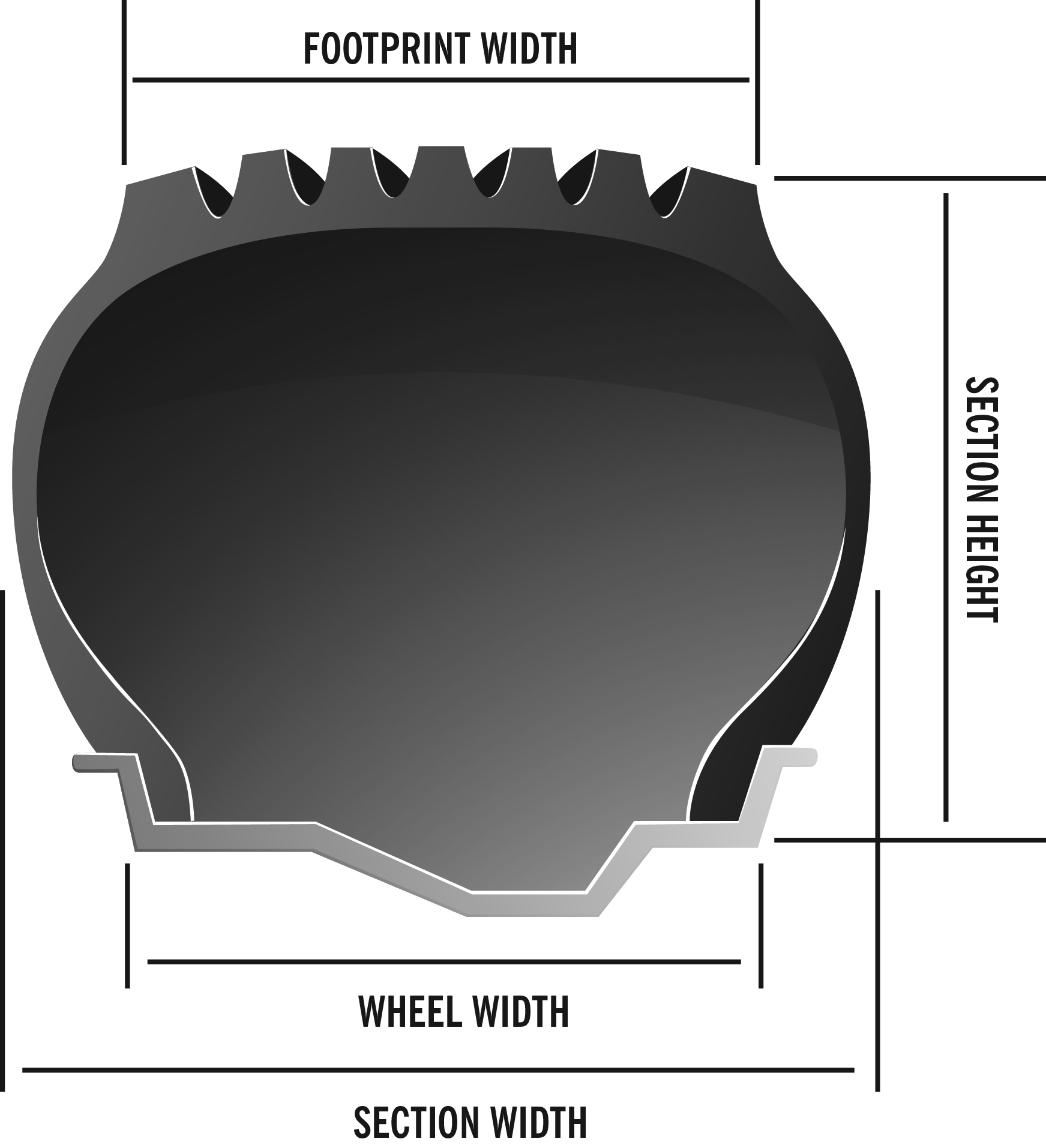 One aspect of tire sizing that is often confused is aspect ratio. The aspect ratio is a tire’s section height as compared to its section width. The aspect ratio is often referred to as the tire’s “series.” With that in mind, a 50-series tire has a section height that is 50 percent of the section width.
One aspect of tire sizing that is often confused is aspect ratio. The aspect ratio is a tire’s section height as compared to its section width. The aspect ratio is often referred to as the tire’s “series.” With that in mind, a 50-series tire has a section height that is 50 percent of the section width.
Of course, the section width can change on a tire in relation to the width of the wheel on which it’s mounted. As the aspect ratio decreases, it is important to use a wheel that is closer to the section width. For example, a 50-series tire and larger should have a wheel that measures 70 percent of its section width, and a 45-series tire should have a wheel that measures 85 percent of its section width.
The ratio between the section width and the wheel width is very important in selecting the right wheels and tires for your ride. Choosing a wheel that is too narrow will cause the sidewall to balloon and will allow the tire to distort excessively under hard cornering, resulting in sloppy handling. Choosing a wheel that is too wide for the tire can cause it to pull away from the wheel at high speed and will give the car a much harsher ride. The loss of curvature in the sidewall will not allow the tire to flex as far, resulting in a ride where every pothole feels like a crater.
Most tire manufacturers publish guides for their various tire lines, complete with the range of wheel widths that are best suited for each tire size. Sometimes the best tire for your car is not necessarily the biggest tire that will fit, and taking the time to thoroughly explore your options before you pull out your wallet will reap far greater rewards down the road.

I have a 1967 Plymouth satellite it has stock magnums 14x7" rims with 255/70/14 on it now looking for something wider for the back and may go skinner on front any suggestions
I have a 72 Chevelle SS. It has 235/60/15 tires on all 4 corners. My question is, can I put a wider tire on these factory rims on the back? They are factory 5 spoke rally wheels.
Was just told by an insurer that because my Porsche had 30 series tires, they would not insure it.
I'm the ol'e s'cool car guy, I have 15'' rims, and need the big fat tires for the rear, where can a guy find stuff bigger than the 295'x50x15's? need some extra wide for my 82' C3, custom stuff you know, but not the stupid prices the want for 1 tire,I can buy a complete set of the 'afore mentioned' tire plus a spare~!, please help~!
I have a 1969 BOSS 429 Mustang that I have had in storage for 30 years. I recently took it out of storage and am getting ready to get it together and back on the road.. It currently is sporting Dunlop H50 15" tires mounted on 15X8 wheels on all four corners of the car.... A couple of questions? 1. What is the modern equivalent size to match this 2. Realizing the multitude of new tire and wheel sizes and dimensions, what other combination would give me the height and width? thank you Steve Johnson
I have a 68 442 what is the beat look and size tires for this vehicle I have 14” & 15” wheels Thanks
I have a 2008 MKX with factory 20 inch wheels that are beat up pretty badly from a previous owner. After driving it for over a year now, I have decided I really don't like the harsh ride of the "low profile" tires it came with. Is it feasible to get a smaller wheel and bigger tire to rectify this issue?
Thinking of putting 14" instead of the 13" wheels on a 1976 cf bedford van ..back im thinking 14 x12 .and front 14x8 what do you say
Old car enthusiast
What is your opinion on the big rim game. 22s and up when your vehicle came with 15s